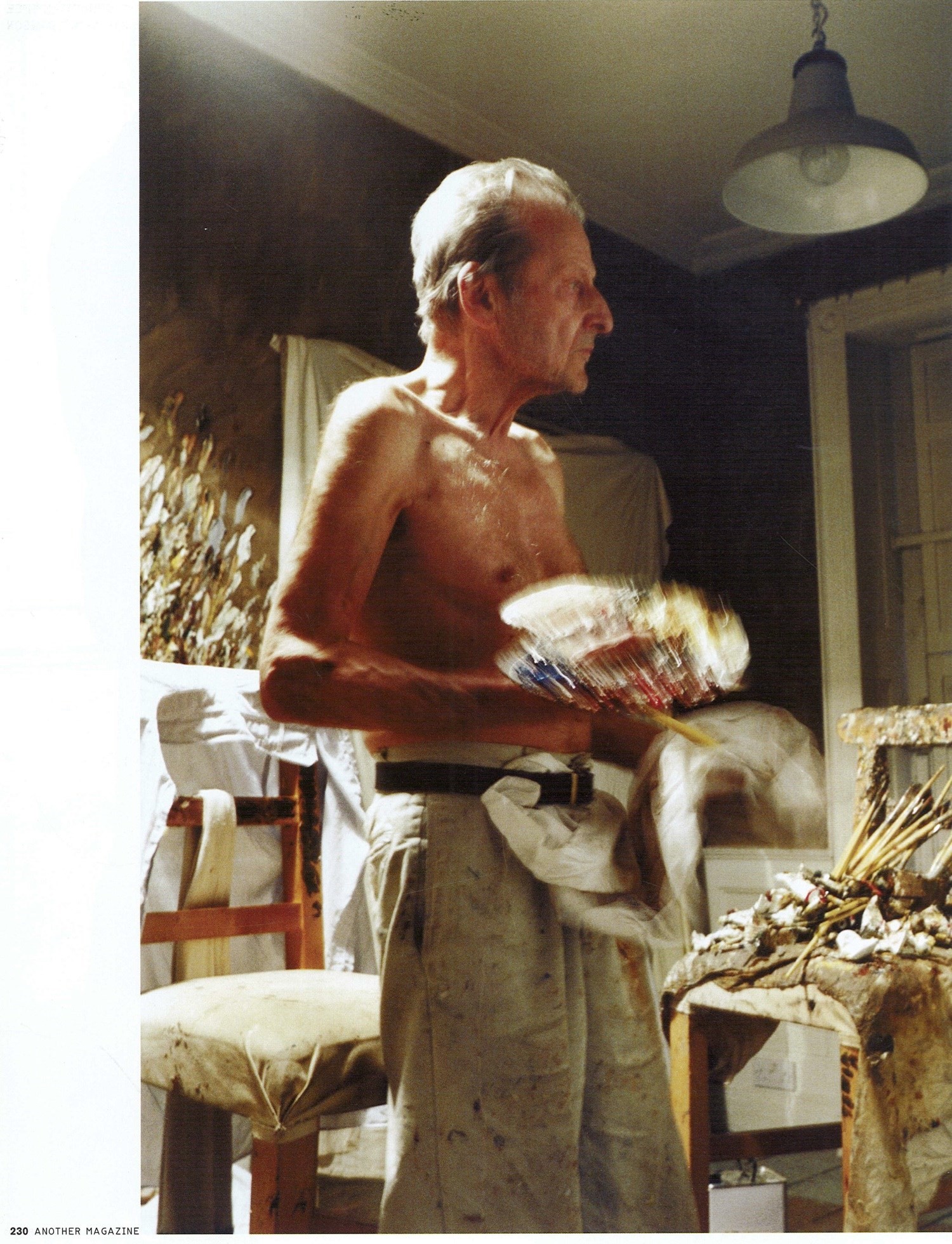Lucian Freud’s combination of kindness, perversity, curiosity and conviction can be disarming. For some, no doubt, it can also be a touch harrowing: Freud is a man who is both acutely sensitive towards others and quite ruthless about controlling his working life. He is gentle and considerate to a remarkable degree, but also wild, unpredictable and greedy – greedy for what matters most to him. He is, in other words – like most interesting things in life – a living contradiction.
Lucian Freud is also an 82-year-old. That defines him, fairly unequivocally, as an old man. But as these photographs of Freud at work and at rest powerfully suggest, he is not your average fogey. He remains a man of tremendous energy and unpredictability. He is, above all, a great painter. He is also fiercely original and independently minded.
The late Bruce Bernard, a photographer and picture editor at The Sunday Times, and a friend who modelled for Freud, wrote about being “very impressed by his exotic and somewhat demonic aura”. He’s right, what first strikes you about the painter are his eyes, which seem to bulge with an indecipherable combination of alarm and curiosity. At the same time, he is sweet. When he opens his front door to you, his head is usually bowed and angled, like an attentive cattle dog’s; his smile warm and unfeigned. He is unlikely to say much at such moments, tending rather to convey an impression of thoughtfulness and distraction, combined with utmost concentration.
But what is his working life like? He is at the easel from early morning until late at night, dividing his time between different models, who arrive at appointed times. (The painter usually works on between three and six pictures at once.) “Whom to work from seems to me quite obvious,” he told me. “I’ve always been interested in extremes, but I’m not interested in doing freaks. I want to paint ordinary people with the attention freaks might get if they appeared in public. I don’t want to use the fact that someone may be made differently as a point of interest.”
There seems little doubt that the demands of sitting for Freud can be intense. Usually, sessions take place on a daily or near-daily basis for months on end, sometimes for over a year. Finding the right pose is usually a collaborative effort, but, whether he is painting a young woman, a child, an old man or a dog, Freud is acutely sensitive to how his models occupy space; how confidently they take up position; how physically adept they are.
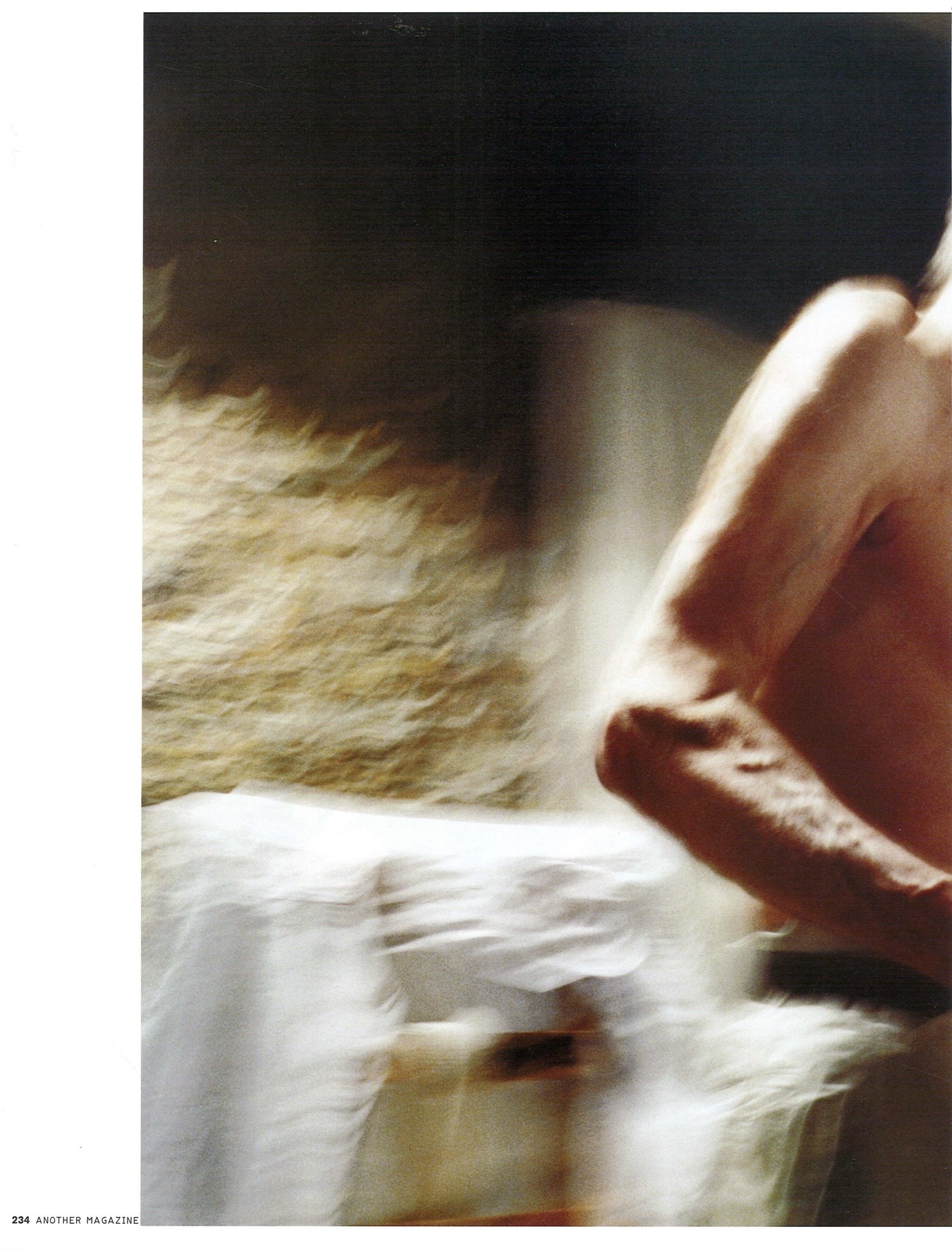
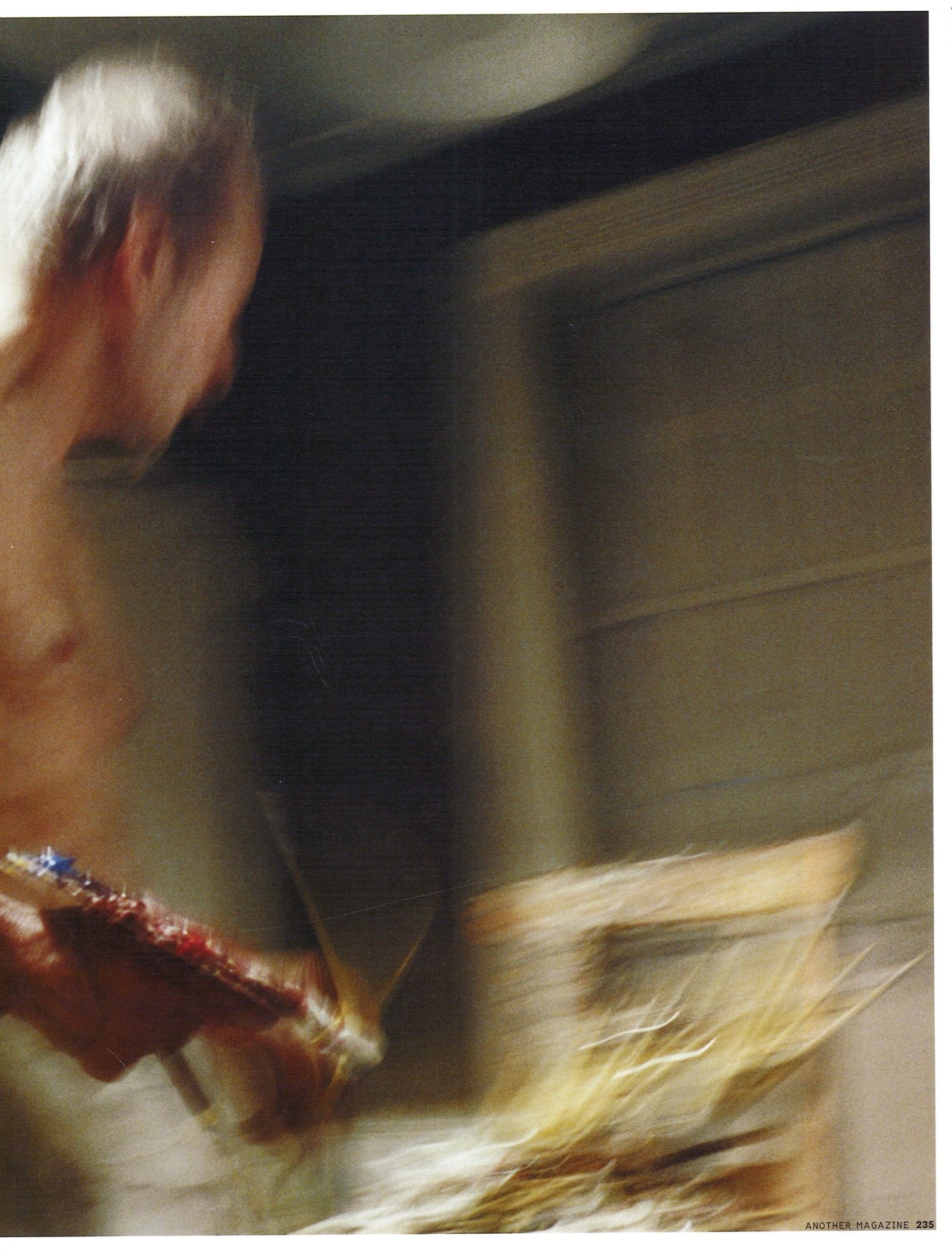
Many of his models speak about the pleasant side of sitting for him: the attention; the stimulus of his company; the fine wines and nice restaurants that are their rewards between sessions. However, there is much about it that must also be gruelling, as Freud seems well aware. “There is something about a person being naked in front of you that invokes consideration,” he says. His finished pictures, wrote the critic Robert Hughes, “bypass decorum while fiercely preserving respect”.
Unpredictability is one of the things you come to treasure about Freud’s company. There is always some surprising new revelation, frequently to do with people, art, or literature, but also, more broadly, to do with ways of seeing – angles at which to position oneself in relation to the world, to the things that count. Perversity plays a part in it: Freud is allergic to cliche, and will go to great lengths to avoid it. “Lucian lives in a world of deep loyalties, friendships and antagonisms,” wrote his friend, the writer Francis Wyndham.
When he takes against things, he does so with gusto. Although he is a compelling and very funny raconteur, he dislikes talking about his own work. “If there is a danger in it for me,” he says, “it’s physical. If I talk too much, it sickens me.”
“If there is a danger in it for me, it’s physical. If I talk too much, it sickens me” – Lucian Freud
The American writer Glenway Wescott wrote about “the absurd position of the artist in the midst of the disorder of those who honour and support him, but who can scarcely be expected to keep quiet around him for art’s sake.” Freud does what he can to minimise this absurdity. He is unapologetically ruthless about who he sees and when. His phone number is known only by a few of his closest family members and friends. As he has grown older, there has been a gradual falling off in the number of people he sees and the frequency with which he goes out socially. He is absolutely singular, utterly focused on his work.
In ‘Some Thoughts on Painting’, an artist’s statement penned half a century ago, he wrote: “The painter must give a completely free rein to any feelings or sensations he may have, and reject nothing to which he is naturally drawn. A painter must think of everything he sees as being there entirely for his own use and pleasure.” In the same statement he wrote about self-indulgence as a discipline through which the painter “discards what is in essential to him and so crystallises his tastes”. It’s a keen, counterintuitive insight: self-indulgence as a discipline. Typical Freud.
David Dawson, himself a talented painter, who, as Freud’s close friend and assistant, has spent more time with him than anyone else over the past 13 years, says: “Painting is a very moral activity. It’s to do with how you live your life. That is what’s so amazing about Lucian. The sheer output of work is phenomenal. He really puts the hours in.” “The harder you concentrate, the more the things that are in your head start coming out,” Freud has said.
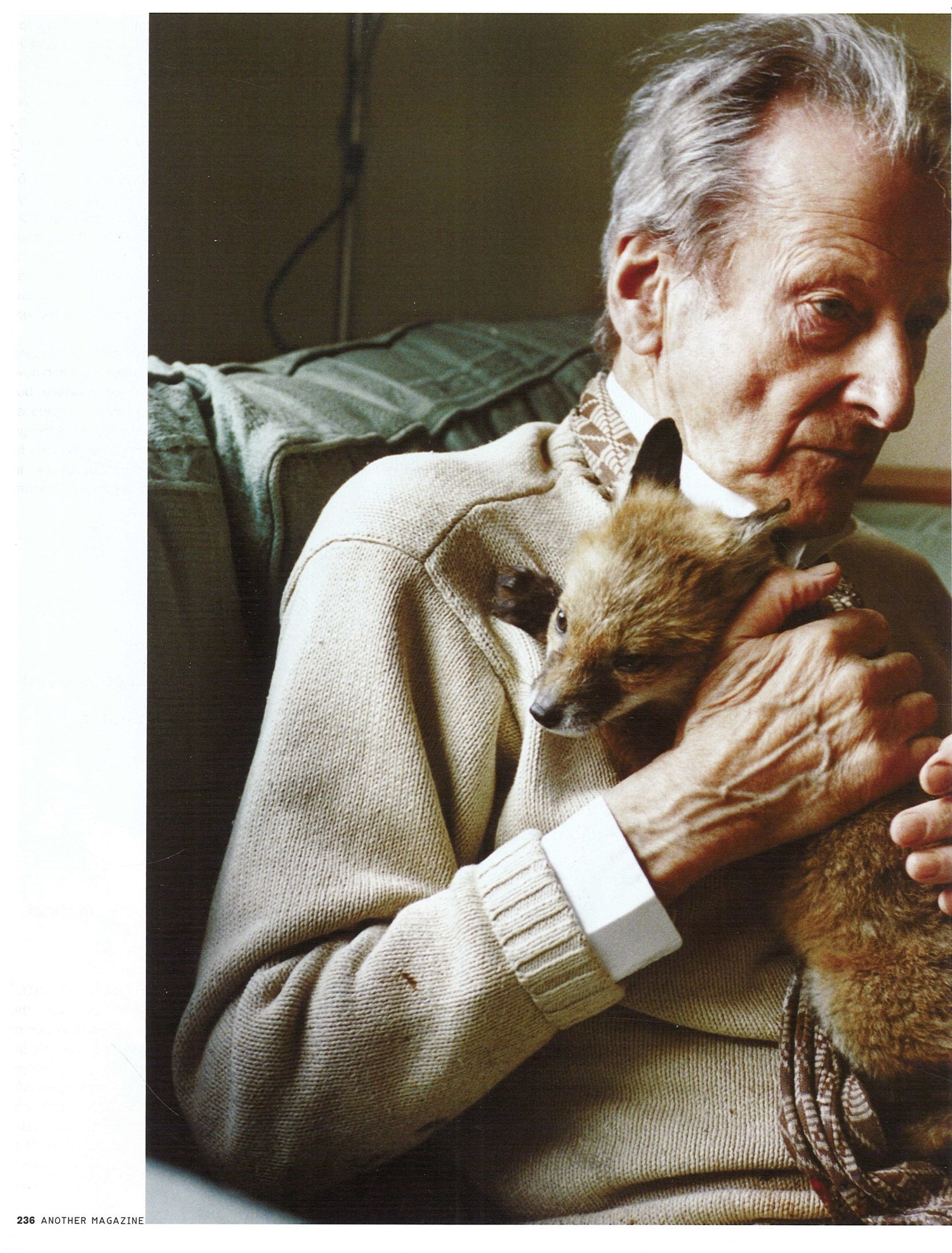
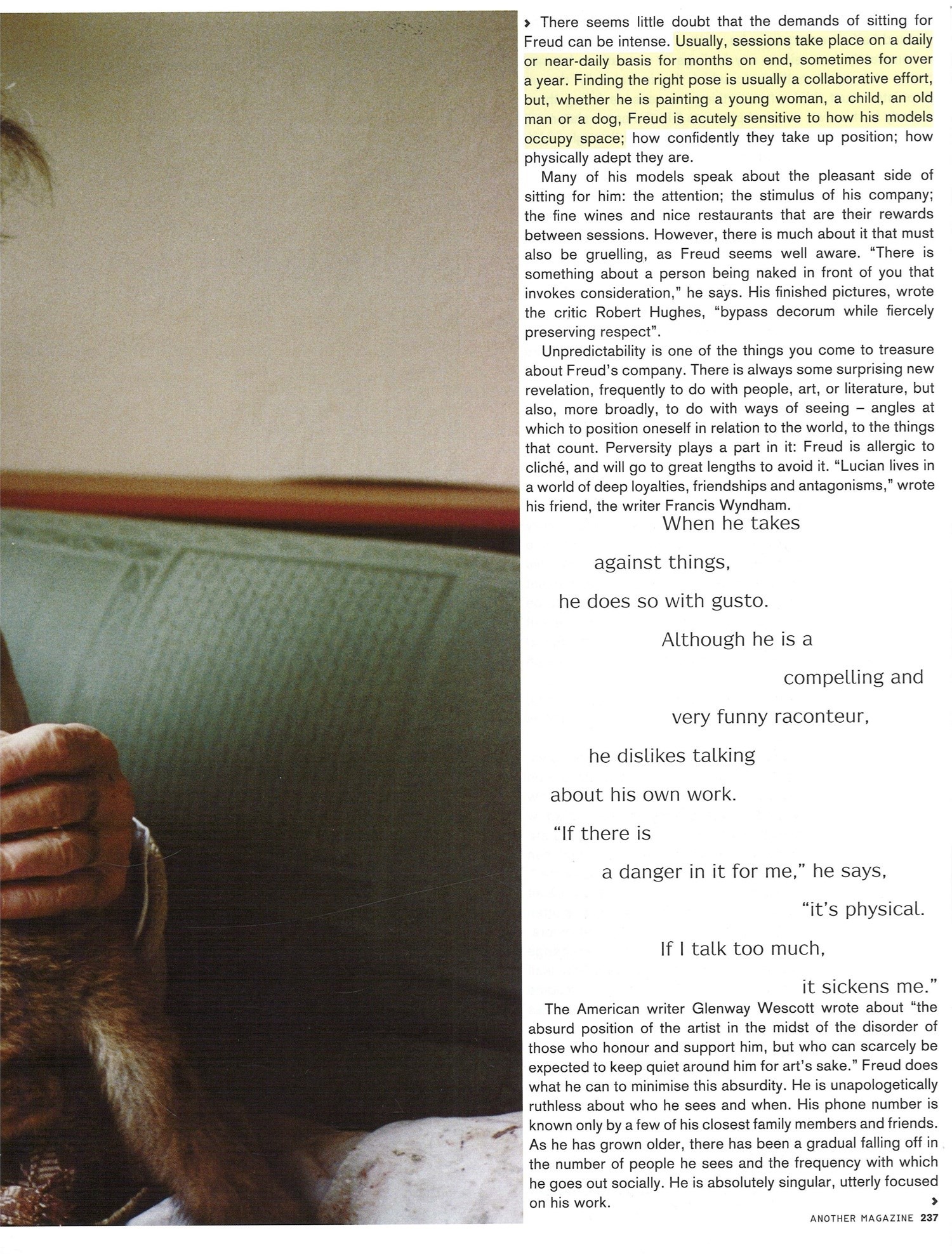
The garden, of course, is a subject which is always there, usually being painted or etched from some new angle. Over the last couple of years, Freud has also been painting a horse in its stable. lt belongs to a riding school attached to a convent not far from his home in Notting Hill. The nun who runs the stable found an orphaned fox cub that she has hand-reared. She and Freud occasionally go riding together.
Freud paints standing. lt looks like – and is – tremendously taxing work, both physically and mentally. For a long time he’s had problems with his left shoulder, which controls his working arm. Part of his response, perversely, has been to set himself evermore difficult tasks in the belief that if it is to be his last piece it should be his most ambitious. His recent portrait of Andrew Parker Bowles was so high that Freud spent much of the 18 months it took to finish standing on portable steps.
His working hours are interspersed with meals, social visits, solitary breaks. “I intend to paint myself to death,” Freud likes to say.
“The painter must give a completely free rein to any feelings or sensations he may have, and reject nothing to which he is naturally drawn” – Lucian Freud
He almost never leaves London. “My idea of travel is downward travel, really,” he told William Feaver in a discussion about John Constable, one of his heroes. “Getting to know where you are better, and exploring feelings that you know more deeply. I always think that ‘knowing something by heart’ gives you a depth of possibility which has more potential than seeing new sights, however marvellous and exciting they are.”
Although Freud has become increasingly solitary in recent months, he is not (and never has been) the recluse he is often mistaken for. Powerfully attracted to the company of others, his life hinges around discreet periods of intimate exchange with what can seem like an endless array of people. This itself is probably an illusion: chatting to him and trying to imagine his social life, there is a tendency for unknown acquaintances to blur in your mind with the many famous and not remotely famous people he has known in the past.
The variety of people in Freud’s life is matched by the variety in his canvases. Looking at them, you become aware not of one overriding idea, but of a kind of proliferating intimacy – powerful, specific and always surprising.
These photographs are by Freud’s friend and assistant David Dawson. Dawson uses the shots he takes on West London streets as source material for his paintings. In recent years, he has also been taking beautiful photographs of Freud both at work, and occasionally away from his easel. A selection of Dawson’s images were shown at the National Portrait Gallery in London last year; these are some of the more recent.
This story originally appeared in the Autumn/Winter 2005 issue of AnOther Magazine.
